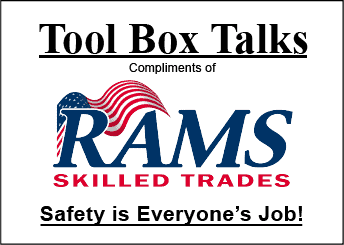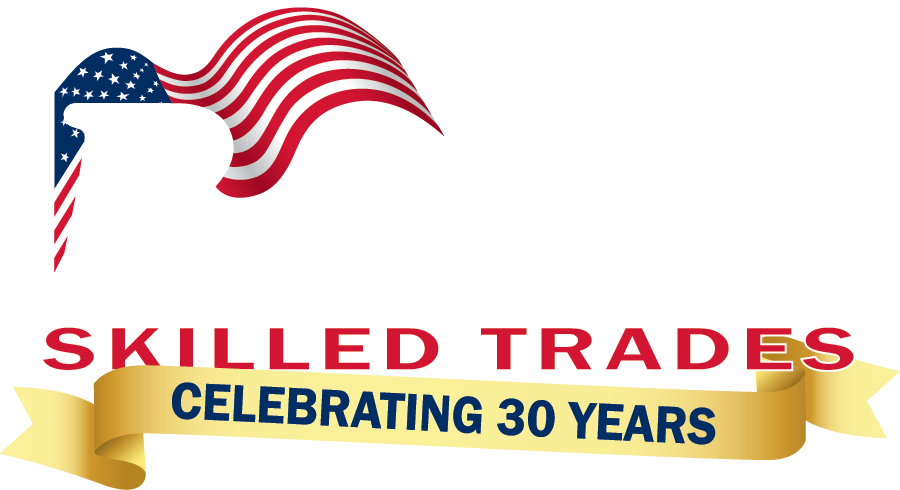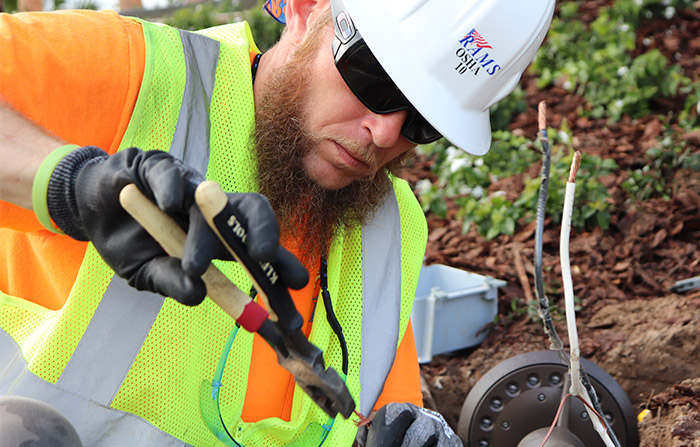RAMS Work Safe
RAMS Work Safe is a five-hour, introductory safety awareness program for construction and maintenance personnel assigned to work sites.
RAMS Tool Box Meetings
RAMS Tool Box Meetings is an entire series of 5 to 10-minute refresher courses designed to start the day with safety at top of mind. This folder includes a log to document courses covered during construction projects, which has a measurable impact on reducing site-related injuries.
- Ladder Safety
- Aerial Lifts
- Heat Illnesses
- Fall Protection
- Trenching
- Fire Protection
- Confined Spaces
- First Aid/BBP
- Lockout/Tagout
- Housekeeping
- Electrical
- Compressed Gases
- Workplace Violence
- Welding, Cutting & Brazing
- Hand & Portable Tools
- Back Injuries
- Fueling
- Material Handling
- Vehicle Safety
- Flammable & Combustible Materials
- Cranes & Rigging
- Overhead Power Lines
- Stairways
- Road Work Safety
- Lightning
- Concrete & Masonry
- Personal Protective Equipment (PPE)
- Scaffolding
- Hazard Communication
- Silica

OSHA 10-Hour Training
RAMS’ OSHA 10-Hour Training teaches the recognition, avoidance, abatement and prevention of safety and health hazards in the workplace. This course focuses on federal and state OSHA construction industry standards and is a proven way to earn an OSHA 10 Card and achieve the safety levels required on job sites throughout the construction industry.
Following this OSHA 10 training course, students should be able to:
- Recognize what worker rights are protected under OSHA
- Recognize what responsibilities an employer has under OSHA
- Identify major fall hazards
- Identify common caught-in or -between hazards
- Identify common struck-by hazards
- Identify types of electrocution hazards
- Identify ways to select appropriate PPE and lifesaving equipment
- Identify major health hazards common to the construction industry
- Recognize how to protect oneself from material handling hazards
- Identify major hand & power tool hazards
- Recognize role of the workforce in improving the current culture
- Recognize the role of management in improving the current culture
Course Topics
- Introduction to OSHA
- Explain worker rights under OSHA
- Discuss employer responsibilities under OSHA
- Understand how OSHA inspections are conducted
- Focus Four Hazards
- Identify, describe and protect yourself from each of the following Focus Four Hazards:
- Fall Hazards
- Electrocution Hazards
- Caught-In or -Between Hazards
- Struck-By Hazards
- Recognize employer requirements to protect workers from each of the Focus Four Hazards
- Identify, describe and protect yourself from each of the following Focus Four Hazards:
- Personal Protective Equipment (PPE)
- Describe types of hazards that require PPE Lifesaving Equipment
- Identify and select appropriate PPE Lifesaving Equipment
- Protect yourself from Safety & Health hazards
- Health Hazards in Construction
- Identify major health hazards common to the construction industry
- Describe acute and chronic health hazards
- Protect yourself from safety and health hazards
- Materials Handling, Storage and Use
- Identify material handling hazards on the job site
- Describe common types of material handling hazards
- Protect yourself from material handling hazards
- Hand Tools and Power Tools
- Identify and describe types of hand and power tool hazards
- Protect yourself from hand and power tool hazards
- Leading Cultural Change
- Identify cultural challenges that exist in construction
- Describe ways to use strong safety leadership and positive recognition to affect positive change
- Protect yourself by recognizing negative safety culture
OSHA 30-Hour Training
RAMS’ OSHA 30-Hour Training teaches workers and employers on recognition, avoidance, abatement and prevention of safety and health hazards in the workplace. It includes information on workers' rights, employer responsibilities and how to file a complaint. This course gives you the specific steps and requirements you must meet to earn an OSHA 30 Card and achieve the safety levels required on job sites throughout the construction industry.
Following this OSHA 30 training course, students should be able to:
- Recognize what worker rights are protected under OSHA
- Recognize what responsibilities an employer has under OSHA
- Identify major fall hazards
- Identify common caught-in or -between hazards
- Identify common struck-by hazards
- Identify types of electrocution hazards
- Identify ways to select appropriate PPE and lifesaving equipment
- Identify major health hazards common to the construction industry
- Recognize how to protect oneself from material handling hazards
- Identify major hand & power tool hazards
- Recognize role of the workforce in improving the current culture
- Recognize the role of management in improving the current culture
- Recognize ways to protect oneself from crane hazards
- Identify major hazards related to motor vehicles, mechanized equipment and marine operations
- Recognize ways to protect oneself from fire hazards thru prevention and emergency response
- Recognize employer requirements for protecting workers from concrete & masonry hazards, including abatement methods
- Identify major steel erection hazards
- Recognize ways to protect oneself from welding & cutting hazards
- Describe types of confined space hazards
- Recognize ways to protect oneself from confined space hazards
- Describe activities that can lead to MSD and RMD injury and illness
- Recognize employer requirements for providing a safety and health program that effectively reduces and prevents employee injury, illness, and fatality
- Identify responsibilities of a supervisor in preventing worker injuries and unhealthful exposures
- Recognize the specific legal responsibilities of a supervisor to protect worker safety and health
- Identify the reasons for an incident investigation and future preventative measures that may result
- Recognize ways to protect oneself from arc flash hazards
- Describe types of health and safety construction hazards and appropriate forms mitigation
Course Topics
- Introduction to OSHA
- Contractor's Safety and Health Program
- Reporting and Record Keeping
- Electrical Hazards
- Fall Protection
- Materials Handling
- Cranes and Rigging
- Motorized Mobile Platforms
- The Competent Person
- Excavations
- Work Zone Traffic Control
- Forklift Hazards
Aerial & Scissor Lift Training
RAMS provides our clients with hands-on training and operation of various aerial lifts and work platforms that is Site-Specific and Equipment-Specific. RAMS makes this easy and is another value-add that can help you reduce injuries and increase profitability. We have certified instructors whose training will equip your workers with the knowledge and skills they need to safely operate aerial and scissor lifts.
Here are some of the things our lift operator training courses offer:
- How to operate various types of aerial lifts, including articulating and telescopic boom lifts and other aerial work platforms (AWPs)
- How to use lifts on rough, soft or uneven terrain
- When and where not to use aerial lifts
- How to perform daily equipment inspections
- How to assess the surrounding environment for potential hazards
- How to prevent accidents that can result in worker injuries or deaths and equipment damage
- How to use safety tools and personal protective equipment (PPE)
- What’s required to be OSHA compliant
FALL PROTECTION TRAINING
According to the Bureau of Labor Statistics (2014 Census of Fatal Occupational Injuries Report) falling was the most common cause of workplace fatalities during that year. Because of the number of deaths related to falls, OSHA now requires aerial work platform (AWP) operators be trained in fall protection.
RAMS Fall Protection Training covers safety issues associated with aerial and scissor lifts in the workplace. OSHA’s regulations regarding aerial lift fall protection is a highly debated issue because changes in safety standards occur frequently. With RAMS, you can have confidence that our clients and employees are getting the latest training on AWP operation.
RAMS training will teach your workers fall protection requirements, procedures and techniques, including the following:
- Proper safety harness use
- Overhead hazards
- Accounting for fall protection accessories with personal protective equipment
- Safety harness requirements
- Aerial lifts with man cages
- And much more
Through RAMS’ Fall Protection Certification Course, tradesmen will gain the skills, knowledge and confidence to perform their job properly and safely each time they step onto an AWP. RAMS has helped thousands of companies and individual workers aerial lift fall protection training, and we can help you, too!
JumpStart
JumpStart has been developed to promote a higher quality, entry-level skilled tradesman. The program is specifically designed to enhance the production, safety, and retention of the entry-level skilled-trades personnel. Completion of this program enables the student to enter the Apprenticeship program of their choice at an accelerated pace never before offered in the construction industry.
The JumpStart Program consists of a fully monitored 26-week program. The Starting Block is 5 days of formal training consisting of extensive classroom theory and hands-on instruction. JumpStart students receive an additional 16 to 24 hours of classroom training over the 26-week program to further increase theoretical and advanced on the job (OJT) training with our clients.
All students are tested at every phase of the JumpStart program: during the application and acceptance process, at the completion of the initial training and at each of the follow-up training sessions. This way, RAMS can determine their level of theoretical and practical knowledge. The information obtained from this testing has shown that a Jumper’s understanding of their trade more than doubles during the initial training phase.
DRUG FREE
RAMS is committed to the safety, health and welfare of its employees. The management at RAMS has the responsibility to help identify and correct, to the best of their abilities, safety or industrial health hazards and allow the free exchange of information and reporting of these hazards. RAMS has the further responsibility to maintain a fair and unbiased reporting network that is available to all its employees without fear of recourse.
Testing Procedure
Pre-employment: 100% new hires (corporate support and tradesmen)
Random Testing: 5% of all employees monthly
Reasonable Cause: As-needed
Post-Accident: 100% required
Treatment Follow-Up: 30 days
EQUAL EMPLOYMENT OPPORTUNITY
The RAMS Family of companies is committed to the principles of equal employment opportunity and non-discrimination. It is our duty to ensure that all potential employees are evaluated based on qualifications and ability, without regard to age, sex, race, color, religion, handicap or veteran status. It is our firm conviction that equal opportunity practices will contribute to the success of RAMS and its employees.


